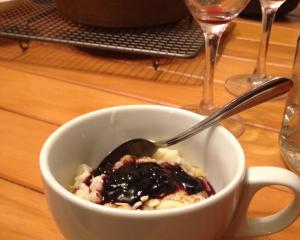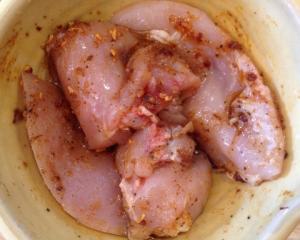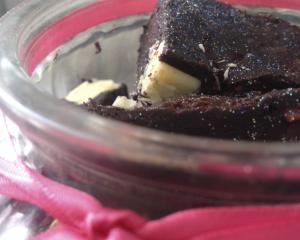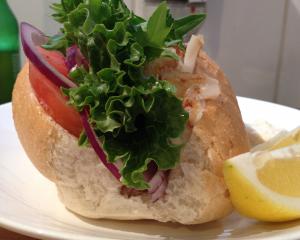
Bagels are one of those specialty breads which are a bit on the pricey side. At best you can get them on special for $1 a bagel. But you only get four in a pack and that is somewhat depressing.
Over the weekend, I decided to try my hand at making them. It is pretty simple, although I did use the dough hook on my mixer to knead the dough. Bagels get their density from the dough and their chewiness from boiling them in water prior to baking.
Watching the bagels puff up in the water is amazing (it is at that point you regret not making them smaller!).
It doesn't matter if your kneading is terrible because the dough is very dense and quite forgiving.
I got this recipe from Rachel Allen's Bake!. I made a few adjustments (I didn't have cornmeal or molasses). But, truth be told, I doubt this recipe varies much from a million others out there.
Sunday was a perfect morning for bread making, hence I have called these Sunday morning bagels.

Sunday Morning Bagels
Makes 10-12
Adapted from Rachel Allen's Bake!
450g high-grade flour
7g instant yeast (8g Edmonds instant yeast sachets work a treat)
2 tsp salt
250ml warm water (slightly warmer than blood temperature)
2 Tbsp runny honey (or hard honey that has been blasted in the microwave)
1 Tbsp vegetable oil
3 Tbsp golden syrup
4L boiling water
1 egg beaten with 1 Tbsp cold water and a sprinkling of salt
sesame seeds, poppy seeds etc for topping
Sieve the yeast, flour and salt into a large bowl.
Mix the water, honey and oil together in a jug.
If using a stand mixer, turn the mixer on to the lowest setting with a paddle attachment and gradually pour the liquid into the flour.
Once combined (but not smooth) switch over to a dough hook and knead on the lowest speed for 10 minutes.
If kneading by hand, make a well in the centre of the flour and gradually add the liquid, stirring gently until it all comes together.
Tip onto a floured board and knead by hand for 10 minutes.
The dough should be dense and stiffer than normal bread dough.
Once kneaded, place in a lightly oiled bowl, cover with cling film and leave to rise and double in size in a warm place. I was impatient and stuck my bowl in front of my fan heater and switched it on to low. Rising may take two to three hours (or an hour and a-half if you have a heater).
Once raised, give the dough a couple of knead strokes. At this stage you need to boil the kettle and make the golden syrup and water solution.
Form the dough into a fat sausage about 25-30cm long. Using a flat-bladed knife, slice the dough sausage into 10-12 equal portions (about 2-3cm in thickness).
Take each disc of dough and poke your finger through the centre. Stretch the dough ring until the hole is about 4cm in diameter.
Place on a tray lined with baking paper and repeat with the other dough discs.
Cover and leave to rise again for 10-20 minutes in a warm location.
In the meantime, bring your golden syrup and water solution to a strong simmer in a large saucepan. Place a tea towel under a rack for the next step.
Heat the oven to 220degC on bake.
Once the dough rings are slightly larger than previously (don't get your hopes up, they're not going to rise that much) they are ready to be boiled.
Place three rings in the saucepan at a time. Boil on each side for one and a-half minutes. Remove the rings, place on the rack and leave to drain. Repeat with the rest of your bagels.
Bake for 13-15 minutes until the bagels are a strong golden brown. Remove from oven, and I recommend demolishing immediately while still hot.
Serve with whatever your heart (or stomach) desires. I think I might go and hunt down some bacon!
I plan to cut my leftovers in half and freeze them in a sealed plastic bag. Enjoy!











